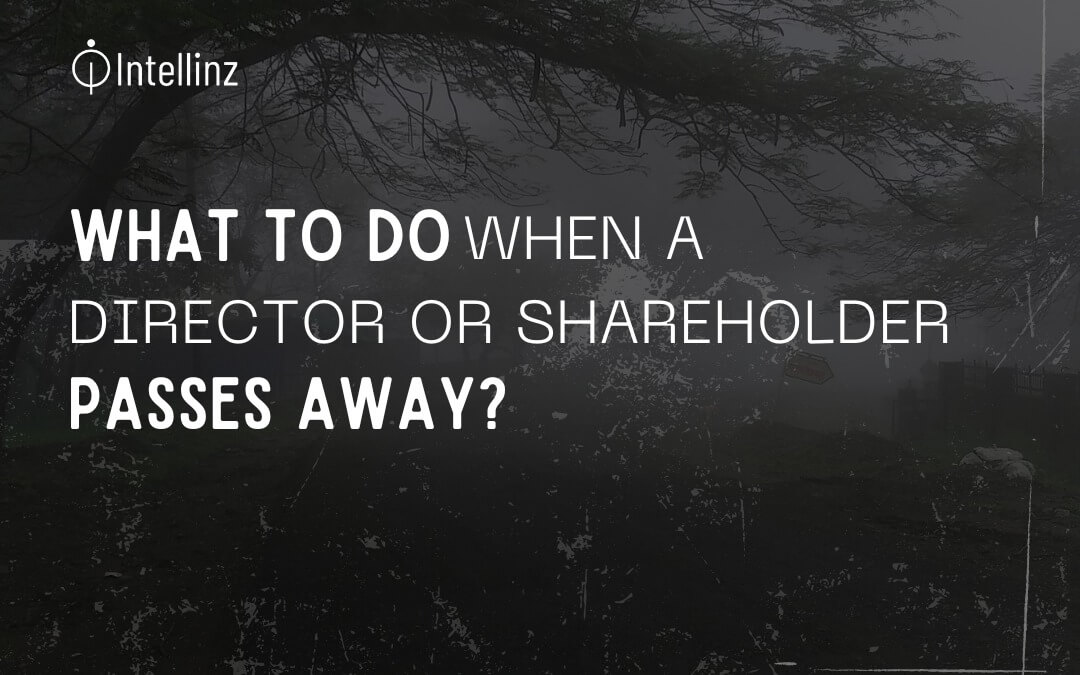When a shareholder of a corporation passes away in Singapore, it is crucial to know what legal actions to take. As you continue reading, you’ll see all the legal procedures that must be carried out after a shareholder’s passing.
You will need to be aware of the distinctions between a share transfer and a share transmission.
Share Transfer vs Share Transmission
There are two ways that we can legally transmit shares from one person to another.
The first option is share transfer. A share transfer can be freely started at any moment by a shareholder. Shareholders who wish to transfer their shares must formally state their purpose by filing an instrument of transfer. Stamp duty will also be paid by the shareholders.
It is significant to highlight that a legal event like death does not qualify for share transfers. The only way to transfer ownership of a deceased shareholder’s shares to a new owner is through share transmission. The execution of the instrument of transfer and the payment of stamp duty is not necessary for the transfer of shares.
Share transmission can occur simply by a shareholder passing away. Shares in both private and public firms are subject to this triggering.
When a Shareholder Passes Away, What Happens To The Shares?
While there aren’t many formalities involved in the share transmissions, the processes are nonetheless impacted by a few provisions of the company’s constitution. For instance, the constitution of the company frequently states who is qualified to acquire transferred shares.
The Model Constitution’s share transfer regulations will presumably govern whom shareholders can transmit their shares to if the company is implementing the unidentified Model Constitution.
If the shareholder is a joint shareholder of the business
According to the Model Constitution, if the shares are held jointly from the beginning, the company only considers the surviving shareholder(s) as the qualified beneficiaries of the deceased’s interests.
In other words, in the event of a shareholder’s demise, the shares will pass to the joint shareholders. The remaining shareholders then have the authority to manage the shares.
if the shareholder owns the business alone
When a company’s only shareholder passes away, the company only acknowledges the deceased’s, personal representatives.
The word “personal representative” correctly refers to an executor if the shareholder left a will. In the absence of a will, an administrator will serve as the rightful personal representative.
When a company’s single shareholder passes away, the personal representative must get in touch with it and offer letters of administration or will-probate. The personal representative must fill out a register with their names and addresses before submitting it to the business. Additionally, the record must contain the precise date of the only shareholder’s death.
It’s important to keep in mind that some Singaporean corporations have the power to limit personal representatives’ access to shares. This kind of restriction is consistent with the clauses of the articles that the business employs.
To clarify the function of a personal representative, let’s look at a real-world scenario. For instance, if a single shareholder of a corporation left a written will for his or her children, the personal representative is responsible for distributing the shares to the children by the written will.
Since every Singapore company is required to have at least one director who resides in Singapore, if the single shareholder of the company also serves as its director, a new director must be appointed.
How to Make a Share Transmission to the Personal Representatives of the Deceased
We cannot transfer shares to the deceased personal representatives automatically. Instead, before the transfer can happen, the personal representative must take some legal action. The corporation can verify the representative’s status as the deceased’s legal personal representative thanks to these crucial actions, which are necessary.
The executor must submit a court application for a Grant of Probate if the decedent shareholder left a will.
When a shareholder passes away without leaving a will, the administrator must apply to the court for Letters of Administration.
The administrator or executor is given legal authority by the Letters of Administration and Grant of Probate, respectively. It is to make sure that he or she can manage the decedent’s assets. Without either document, the administrator/executor cannot get the transferred shares.
Restrictions on the Transmission of Shares
The restriction that applies to the categories of people who are qualified to receive transmitted shares is the one that all Singapore corporations must abide by. Other company-specific constraints include those that follow the constitution of the business.
The directors of the firm, for instance, have the authority to prevent the legal owner of shares from signing up as a member.
Since the transmission constraints depend on what firms write in their constitutions, the potential changes are limitless. A current copy of the business constitution must therefore always be kept.
The procedure for dissolving a business after the passing of a lone shareholder who also serves as its director
As previously noted, the default situation is that his or her shares would transfer in accordance with the company’s charter.
The procedure for closing a private limited company is the same as it is for any other firm cessation in the event that the person receiving the sent shares has no intention to continue business as usual but rather to move on with a company strike-off. However, in this specific instance, the striking-off is only relevant after the share transmission is complete.
Conclusion
The default arrangement is for a shareholder’s shares to be transferred in accordance with the company’s charter upon death. It would be beneficial to read your company’s constitution and obtain legal counsel if you are unsure about the transmission limitations therein.






